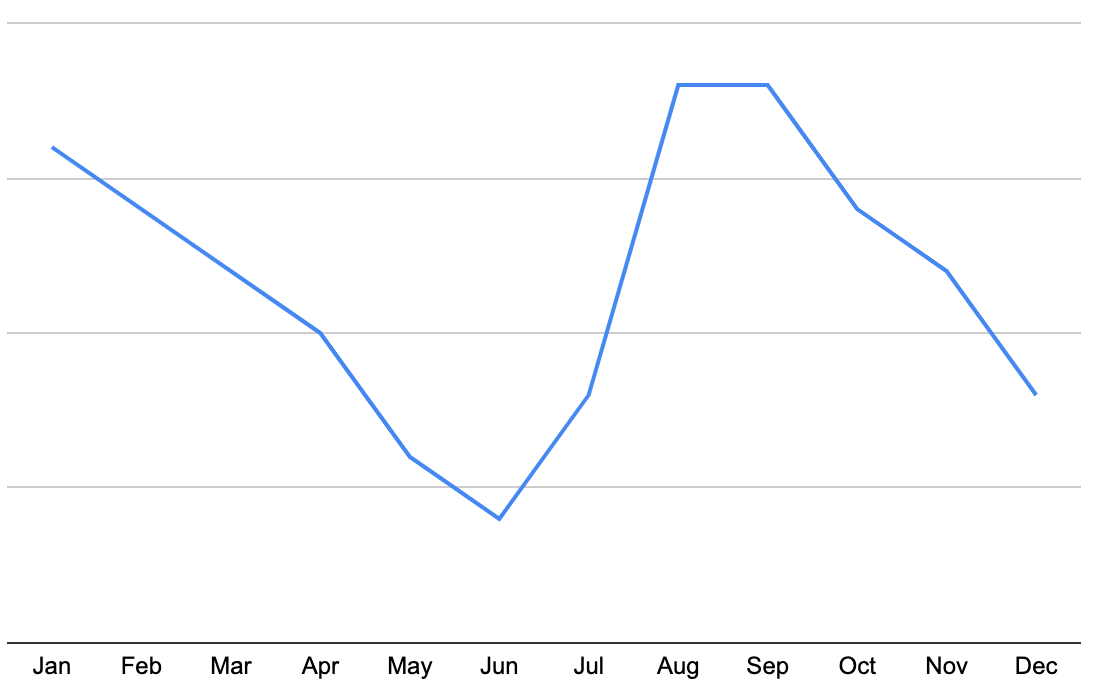At EA Geneva/EA Switzerland we have a recruitment season twice a year, once from mid-August to mid-October and once from mid-January to the end of February.
During the recruitment season, we focus the majority of our efforts on doing active outreach, for example by:
- Sending emails through (university) newsletters;
- Posting on social media;
- Announcements within the community, and;
- Actively asking members to refer others to the upcoming Impact Seminar (our introduction program).
Outside of the recruitment season, we focus on supporting our existing members and only do passive outreach by a) calling with interested people who reach out to us and b) occasionally, providing a short introduction talk on EA, if we are invited to speak for a potentially promising audience.
Reasons why your group might consider working with a recruitment season:
- Focus: by working with a ‘recruitment season’ and a ‘retainment season’ you can focus your efforts more, and don’t need to worry about the other activity too much.
- Keeping the message fresh: if you do active outreach only twice a year, the message may be perceived as more novel, therefore attracting more attention. We also try to create ‘buzz’ in our community during the recruitment season, actively asking members to refer their friends, fellow students, and colleagues to the upcoming introduction program. I think this can be more successful if done sparsely since if you do this too often, people might become non-responsive to your message.
- Trends: during my previous job, I analyzed the data from a volunteer job board, and observed a clear trend in interest in volunteer vacancies:

Unfortunately, I lost access to the data, but the trend looked roughly like this. The higher the line, the more expressions of interest in volunteer vacancies there were. I analyzed ~ 7 years of data, with +1000 responses a year.
I assume that this trend maps reasonably well to interest in EA and, moreover, I have slightly adapted the recruitment season to align with the start of the university semesters (which seems to be a period when students are more likely to explore).
- Aligning activities: working with a recruitment season aligns your outreach activities into a ‘journey’, especially if you work with a clear next step (‘call to action’). Effective Altruism is a rich set of ideas and for somebody new to the movement it can easily become overwhelming. I think that having a clear next step helps to get people into the movement, and since we run our Impact Seminar only twice a year, it makes sense to do outreach when people can quickly join an introduction program.
Our Spring 2021 recruitment season looked like this:

During the information evening, we gave a quick introduction to EA and longtermism, followed by a Q&A about effective altruism and the upcoming Impact Seminar. The goal of the information evening was to reduce the drop-out rate of the seminar as participants would understand better what they were signing up for. In our experience, having a longer introduction program (several weeks) works better than only one introduction evening, as more participants continue to engage with our group afterward.
We deliberately call our program ‘Impact Seminar’ instead of ‘Introduction to EA’ as we have the impression that this is a more attractive wording for people who have never heard about effective altruism. I haven’t noticed confusion with the participants about this wording, as the program is organized by Effective Altruism Switzerland.
I would like to thank the other community builders during the CBG retreat for pointing out to me that I should write about our recruitment season, and would like to thank Antony in particular for this. I’m also grateful to Tobias, Nadia, Jonathan, and Daniel for their feedback on this write-up.

Thank you for your post Naomi! I saw some interesting similarities with how we organize our student group, so I wrote down some thoughts below.
Firstly, that same trend (heightened interest in aug/sep and jan/feb) probably also applies to students' availability/willingness to get engaged with new initiatives on their campus. This is certainly true for students at our university, so we also work with two 'recruitment seasons' (we call them 'cycles') per year.
Three additions to your image from our student group's perspective would be:
Finally, choosing a 'non-EA' name for the introduction program sounds like an interesting experiment. Could you maybe share some additional insights from this (other than that there luckily was no confusion about the program being EA or not)? Perhaps we could also rename our introduction program, although that might get confusing as our group name also doesn't directly include a reference to EA (the rest of our marketing does, though).